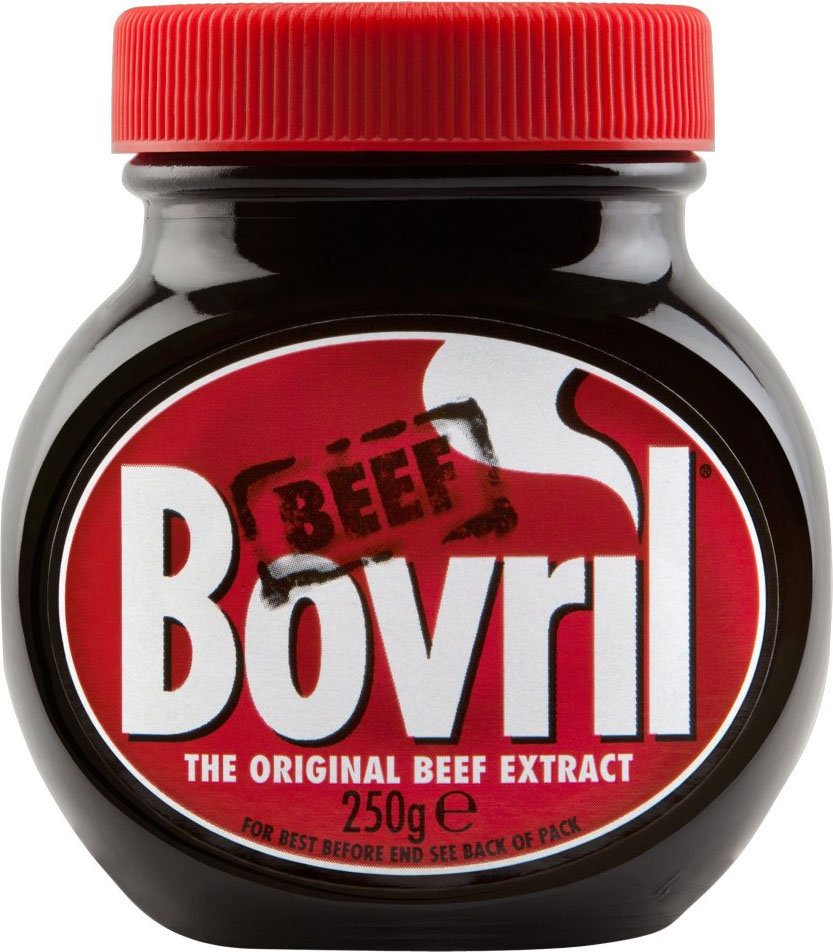Here in the mist-enshrouded, dank area known as England ("this scepter'd isle. This earth of majesty, this seat of Mars. This other Eden, demi-paradise." Shakespeare must have been on the mead when he wrote that.) Here in England, this is the time of year for comfort food. A good, steaming Lancashire hotpot; shepherd's pie; steak and kidney pudding. Food for the gods! One of my favourites is toast and Bovril.
One of the things I like about Bovril - other than its unique taste - is that the bottle in which it is sold has stayed the same shape and colour for as long as I can remember. The label has changed only a little.

I don't know how widely available this very British product is, but there was a scare only last week in Canada when it was reported that Bovril, Marmite and other British foods were banned because of some of their ingredients which are not allowed in that country. A later story tells that these products are allowed in Canada, provided they are made to a Canadian specification. I have to wonder what the changes in the ingredients do to the taste of the products.
And how to describe the taste of Bovril? Well, that's quite a tricky one. Bovril is essentially a beef extract with yeast and has been made in England since the 1880s. It does have a salty flavour, but I'm not at all sure that I really want to look at the list of ingredients which probably include a whole lot of chemicals.
Bovril is not only scrumptious on toast, but it also makes a very tasty hot drink. Just a good teaspoonful in a cup of boiling water is all it takes.
And while we are on the subject of peculiarly British foods (such as Gentleman's Relish) I was astonished to read this week that Marmite Easter eggs are to be sold this year. Now that really does sound disgusting!


4 comments:
I saw the thing about Marmite Easter Eggs - truly disgusting (and I like Marmite!).
Bovril takes me right back to my childhood. My friends parents owned a market garden and when I went to play we always has Bovril on toast or as a hot drink. I've actually got some in my cupboard, I might have to check the date on it though, it's been there a while ...
We have a couple of tins of confit in our cupboard and I have yet to use them because I have no idea how to prepare it. Can you enlighten me, please!!!???
How to prepare them:
1) You roast them. They have to be slightly crispy and golden. I always add a bay leaf, fresh thyme, 3 garlic cloves (sliced in half) and sliced potatoes (see photos – count 3 medium potatoes per person). Cook in a preheated oven 200°C/400°F for 25-30 minutes, depending on oven strength.
2) You can also sauté the duck legs in a frying pan until crispy and golden on each side. Sprinkle with fresh thyme towards the end.
Copied from a web site as it was easier than typing it all out)
Strange that I have never heard or read about Bovril. Must be a well kept British secret. Have tasted Vegemite which sounds similar to Marmite. Could not take a second bite! I wonder what we in the Us eat that would have the same effect on the British?
Post a Comment